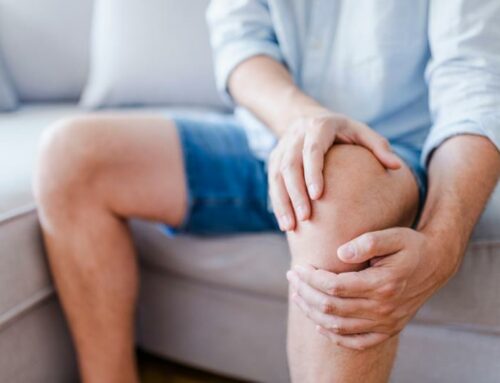A Complete Guide to Balance Problems
Balance problems make it hard for people to maintain stable posture and stay upright when standing, walking, and even sitting. Balance problems are more common in older adults and are the most common reason they seek help from a doctor. If balance problems go untreated, they can lead to falls. Physical therapists can help people of all ages improve their balance. They perform balance testing and develop treatment plans that include physical activity to help improve the strength, stability, and movement of people with balance problems.
Physical therapists are movement experts who improve quality of life through hands-on care, patient education, and prescribed movement.
What Are Balance Problems?
A balance problem exists when a person has difficulty keeping a stable and upright body position, whether moving or staying still. There are many causes of balance problems, including:
Balance problems also can be caused by medical conditions, such as:
Balance problems occur when one or more of these five systems in the body do not function properly:
Vision – Poor vision can result from age, eye tracking problems, or eye diseases.
Inner ear – The part of the inner ear responsible for balance is the vestibular system. Hence, inner ear problems that affect a person’s balance are also called vestibular problems. Inner ear problems can develop from trauma, aging, poor nutrition, or disease.
Muscular system – Muscle strength and flexibility can decline due to lack of exercise, too much sitting, or disease.
Proprioception – (the awareness of one’s own body position) Body-position sense can become abnormal due to trauma or a disease, such as diabetes.
Circulation – A sudden drop in blood pressure when a person sits or stands up, called orthostatic hypotension, can make a person feel dizzy or lightheaded. This may cause a person to faint and fall. Circulation problems can be caused by heart problems, dehydration, and some diseases.
The brain receives and combines information from the eye, inner ear, and body-position senses for balance control. It then sends signals to muscles to move or adjust to stay balanced. A person may not be able to maintain or correct their balance if:
How Does It Feel?
A person with balance problems may experience:
Some people’s balance may be fine when sitting or standing still. This is called static balance. Balance also may be fine when only doing one thing at a time. Problems occur more often with dynamic balance, when a person moves about or tries to do more than one thing at a time. Dynamic balance problems also occur when information from the eye, inner ear, and body-position senses is altered. Examples include:
How Is It Diagnosed?
If you see a physical therapist first, they will conduct a full evaluation that includes taking your health history. Your physical therapist also will ask you detailed questions about your condition, such as:
Your physical therapist will perform tests to check your overall physical ability in areas such as:
How Can a Physical Therapist Help?
Physical therapists offer many options to treat balance problems, based on each person’s needs. They evaluate many systems of the body, including:
Physical therapists are movement experts who prescribe active movement techniques and physical exercise to improve these systems. Exercises may include those for:
Your physical therapist can identify, diagnose, and help treat your balance problems by identifying their causes. They will design a treatment program specific to your needs, challenges, and goals. They also will provide you with exercises you can do at home. Your treatment plan may include strategies to:
Reduce falls risk – Your physical therapist will assess problem footwear and hazards in your home that increase your risk of balance problems or falling. Hazards can include loose rugs, poor lighting, pets under foot, or other obstacles.
Reduce the fear of falling – By addressing specific problems that are found during your examination, your physical therapist will help you regain confidence in your balance. They will help you improve your ability to move freely and do daily activities. As you build confidence in your balance and physical ability, you will be better able to enjoy everyday activities.
Improve mobility – Your physical therapist will help you regain the ability to move around with more ease, coordination, and confidence. They will develop a personalized treatment and exercise program to gradually build your strength and movement skills.
Improve balance – Your physical therapist will teach you exercises for both static balance (sitting or standing still) and dynamic balance (keeping your balance while moving and doing daily activities). They also may work with you on exercises to improve your ability to react to a balance disturbance to prevent a fall. They will increase these exercises gradually as your skills improve to help you progress.
Improve strength – Your physical therapist will teach you exercises to address muscle weakness, or to improve your overall muscle strength. Strengthening muscles in the trunk, hip, and stomach (core) can be especially important to improve balance. They may use exercise bands for resistance training to improve your strength and avoid joint stress.
Improve movement – Your physical therapist will choose specific activities and treatments to help restore normal movement in any stiff joints. These might begin with passive motions that the physical therapist does for you, and progress to active exercises that you do yourself.
Improve flexibility and posture – Your physical therapist will determine if any of your major muscles are tight. They will teach you how to gently stretch them. Your physical therapist also will assess your posture, and teach you exercises to improve your ability to keep a proper posture. Good posture can improve your balance.
Increase activity levels – Your physical therapist will discuss activity goals with you. They will design an exercise program to address your specific needs and goals. Your physical therapist will help you reach those goals in the safest, fastest, and most effective way possible.




